Nepal
Welcome to Nepal
Afghanistan, a land of rugged mountains, ancient history, and rich cultural heritage, is gradually re-emerging as a destination for adventurous travelers in 2025. Despite decades of conflict, the country offers unique experiences for those willing to explore its breathtaking landscapes, historic sites, and vibrant bazaars. With careful planning and respect for local customs, visitors can discover a side of Afghanistan few outsiders have seen.
This small yet diverse country is a paradise for adventure lovers, spiritual seekers, and culture enthusiasts alike. Nepal’s landscapes range from subtropical jungles in the south to rugged alpine terrain in the north, making it a unique destination for trekking, mountaineering, wildlife safaris, and cultural tourism. The Kathmandu Valley, home to the capital city Kathmandu and ancient cities like Bhaktapur and Patan, is a treasure trove of medieval palaces, temples, and UNESCO World Heritage Sites. Spiritual landmarks such as Pashupatinath Temple, Boudhanath Stupa, and Swayambhunath (Monkey Temple) attract pilgrims and tourists from around the world.
1.
Adventure and Nature: Nepal is the ultimate destination for mountain lovers and trekkers. Iconic trails like the Everest Base Camp and Annapurna Circuit offer stunning views of snow-capped peaks, serene villages, and pristine landscapes. Beyond trekking, visitors can enjoy paragliding in Pokhara, white-water rafting, mountain biking, and wildlife safaris in Chitwan National Park.
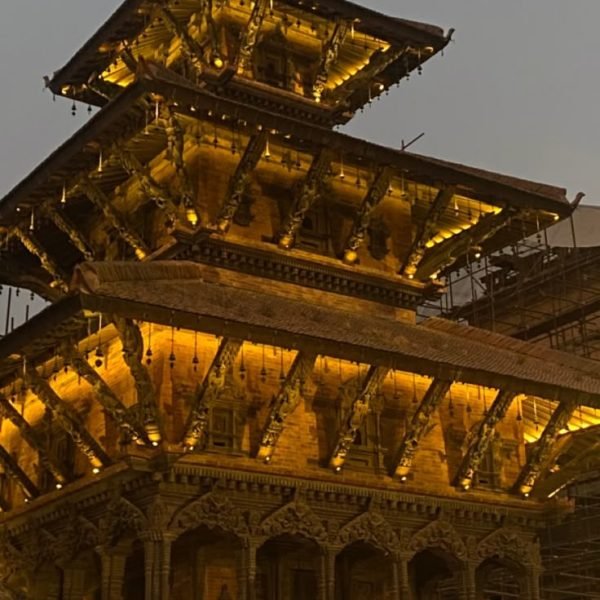
2.
Cultural and Spiritual Richness: The country’s unique blend of Hinduism and Buddhism is reflected in its architecture, festivals, and daily life. Ancient temples, vibrant festivals, and warm hospitality provide deep cultural immersion. The spiritual ambiance of monasteries and stupas offers a peaceful retreat for those seeking enlightenment or cultural exploration.
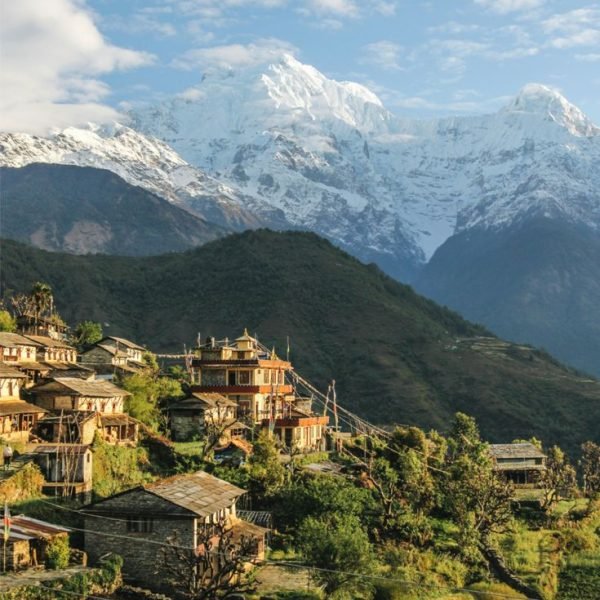
Planning Your Trip
Visa Information
Nepal offers a relatively straightforward visa process for most travelers. Indian nationals can enter Nepal without a visa and obtain a visa on arrival. For other international visitors, visas are available on arrival at Tribhuvan International Airport in Kathmandu and at various land border crossings. Many countries also qualify for an e-visa, simplifying the application process before arrival.
Best Time to Visit
The most popular times to visit Nepal are during the spring and autumn seasons. These months offer clear skies, moderate temperatures, and excellent trekking conditions. Spring brings blooming rhododendrons and vibrant landscapes, while autumn provides crisp air and spectacular mountain views. The winter months are colder but ideal for lower altitude treks and cultural tours. The monsoon season sees heavy rainfall, making trekking more challenging but also transforming the landscape into lush greenery.
Getting To and Around
- Getting In: The main international gateway is Tribhuvan International Airport in Kathmandu, which connects Nepal with major cities in Asia and some international hubs. Travelers can also enter by road from India and China through various border points.
- Getting Around: Within Nepal, transportation options include buses, microbuses, taxis, and domestic flights. Buses and microbuses are economical but can be slow due to mountainous roads. Domestic flights are highly recommended for covering long distances quickly, especially when traveling to Pokhara, Lukla (gateway to Everest), and other remote regions. For local sightseeing in cities like Kathmandu, taxis and rickshaws are convenient.
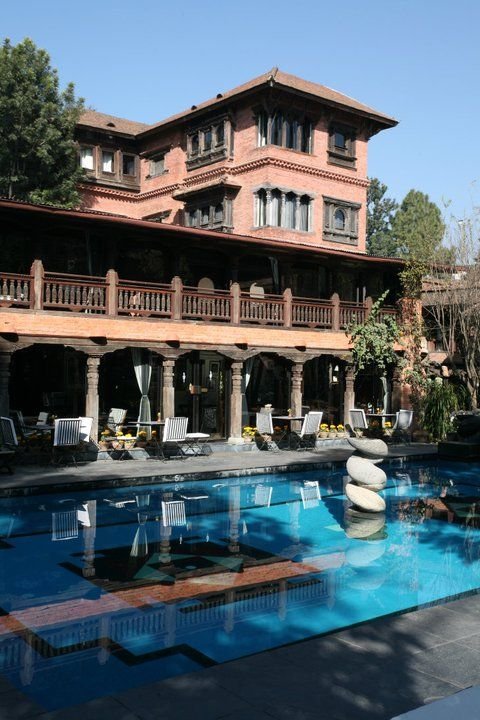
Accommodation
Nepal’s accommodation options vary widely, from luxury hotels in bustling cities to simple teahouses on remote trekking trails. This variety ensures that every traveler, from luxury seekers to budget adventurers, finds a comfortable place to rest.
Accommodation Options
City and Tourist Hub Accommodation
In Kathmandu, Pokhara, and other popular cities, you’ll find a broad spectrum of lodging options:
- Luxury Hotels and Boutique Heritage Properties: These include internationally branded hotels and charming heritage hotels that blend traditional Nepali architecture with modern comforts. Many offer amenities such as spas, swimming pools, fine dining, and cultural programs. Examples include historic hotels in Kathmandu with royal ambiance and resorts in Pokhara overlooking the Annapurna range.
- Mid-Range Hotels and Guesthouses: Comfortable hotels with en-suite bathrooms, hot showers, and reliable services are plentiful. These are ideal for travelers who want convenience and good value without the high price tag of luxury resorts.
- Budget Hotels and Hostels: For backpackers and budget travelers, there are many affordable guesthouses and hostels, especially in areas like Thamel in Kathmandu and Lakeside in Pokhara. These often provide basic but clean accommodation, communal spaces, and opportunities to meet fellow travelers.
Trekking Accommodation: Teahouses and Mountain Huts
When venturing into the mountains, accommodation becomes simpler but no less charming:
- Teahouses: These family-run lodges line popular trekking routes such as Everest Base Camp, Annapurna Circuit, and Langtang Valley. Rooms are basic, usually with twin beds and shared bathrooms located down the hall. Hot showers and electricity can be limited or available for a small fee. The heart of a teahouse is its communal dining area, where trekkers gather to share meals, stories, and warm tea after a day on the trail. Staying in teahouses supports local communities and provides a unique cultural experience.
- Mountain Huts: In more remote or high-altitude areas where teahouses are scarce, mountain huts offer very basic shelter—often just wooden platforms, a shared stove, and pit toilets. These require bringing your own sleeping bag and supplies, and they offer a raw, authentic mountain experience.
Homestays and Eco-Lodges
For travelers seeking cultural immersion, homestays with local families in villages near trekking routes or around Kathmandu and Pokhara provide a warm welcome. You stay in a family home, share meals, and sometimes participate in daily activities or festivals. Eco-lodges and jungle lodges in national parks like Chitwan offer comfortable stays with a focus on sustainability and wildlife experiences.
Camping and Specialty Lodging
In very remote trekking regions, fully serviced camping with tents and guides is available for those who want to experience the wilderness with added comfort. Additionally, meditation centers and monasteries sometimes offer simple accommodation for spiritual travelers.
Practical Tips for Accommodation
- Book city hotels in advance, especially during peak seasons.
- Teahouse accommodation usually does not require advance booking except in busy months.
- Carry a good sleeping bag for trekking stays.
- Expect cold nights at altitude; heating is rare, so thick blankets and hot water bottles are common.
- Always check for clean water availability and consider water purification methods.
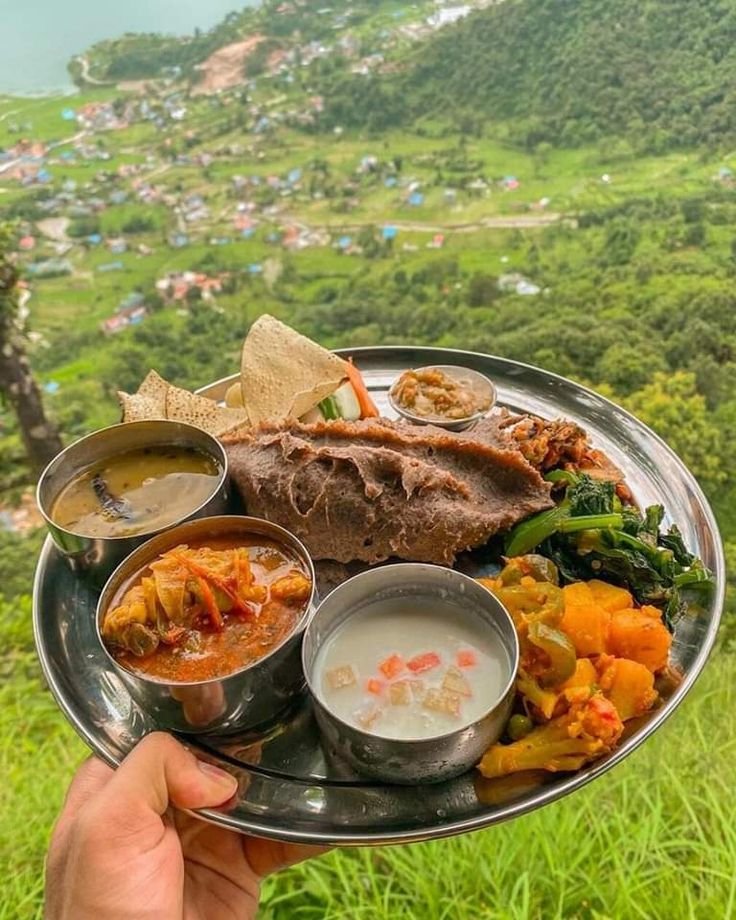
Food and Drink
Nepalese cuisine is a delightful reflection of the country’s diverse cultures and geography. From hearty mountain meals to street food in the cities, the food scene is vibrant, flavorful, and often healthy.
Staple Foods
- Dal Bhat: The quintessential Nepali meal, dal bhat consists of steamed rice (bhat) and lentil soup (dal), accompanied by vegetable curries, pickles, and sometimes meat or fish. It is nutritious, filling, and widely available throughout the country, especially popular among trekkers for its energy-giving qualities.
- Momo: These Tibetan-style dumplings filled with meat or vegetables are a favorite snack or meal. Served steamed or fried, momos are found everywhere from street stalls to restaurants.
- Thukpa: A hearty noodle soup with vegetables and meat, perfect for cold mountain evenings.
- Sel Roti: A traditional sweet, ring-shaped fried bread often eaten during festivals.
Regional and Cultural Influences
Nepal’s cuisine varies by region, influenced by Tibetan, Indian, and Himalayan cultures. In the Terai plains, meals tend to be spicier and richer, with more rice and fish. In the mountains, barley, buckwheat, and dairy products like yak cheese are common.
Dining in Cities and Towns
Kathmandu and Pokhara boast a wide range of dining options:
- Local Eateries and Street Food: Small restaurants and street vendors serve authentic Nepali dishes at affordable prices. Sampling street food like chatamari (rice crepe), samosas, and fresh fruit juices is a must.
- International Cuisine: Tourist areas offer Italian, Chinese, Indian, and continental options, catering to diverse palates.
- Cafés and Bakeries: Particularly in Kathmandu’s Thamel and Pokhara’s Lakeside, cozy cafés serve excellent coffee, baked goods, and fusion dishes.
Food on Trekking Trails
Teahouses provide simple but satisfying meals, often including dal bhat, noodles, soups, and eggs. Food prices increase with altitude due to transportation challenges. Trekkers should stay hydrated and eat plenty of carbohydrates and proteins to maintain energy.
Drinks
- Tea: Tea, especially ginger or milk tea, is the most common warm beverage and a staple in teahouses and homes.
- Local Alcohol: Traditional drinks include raksi (a distilled spirit), tongba (fermented millet drink served warm), and chhaang (fermented barley beer). These are often enjoyed socially or during festivals.
- Bottled Water: Always drink bottled or purified water to avoid illness.
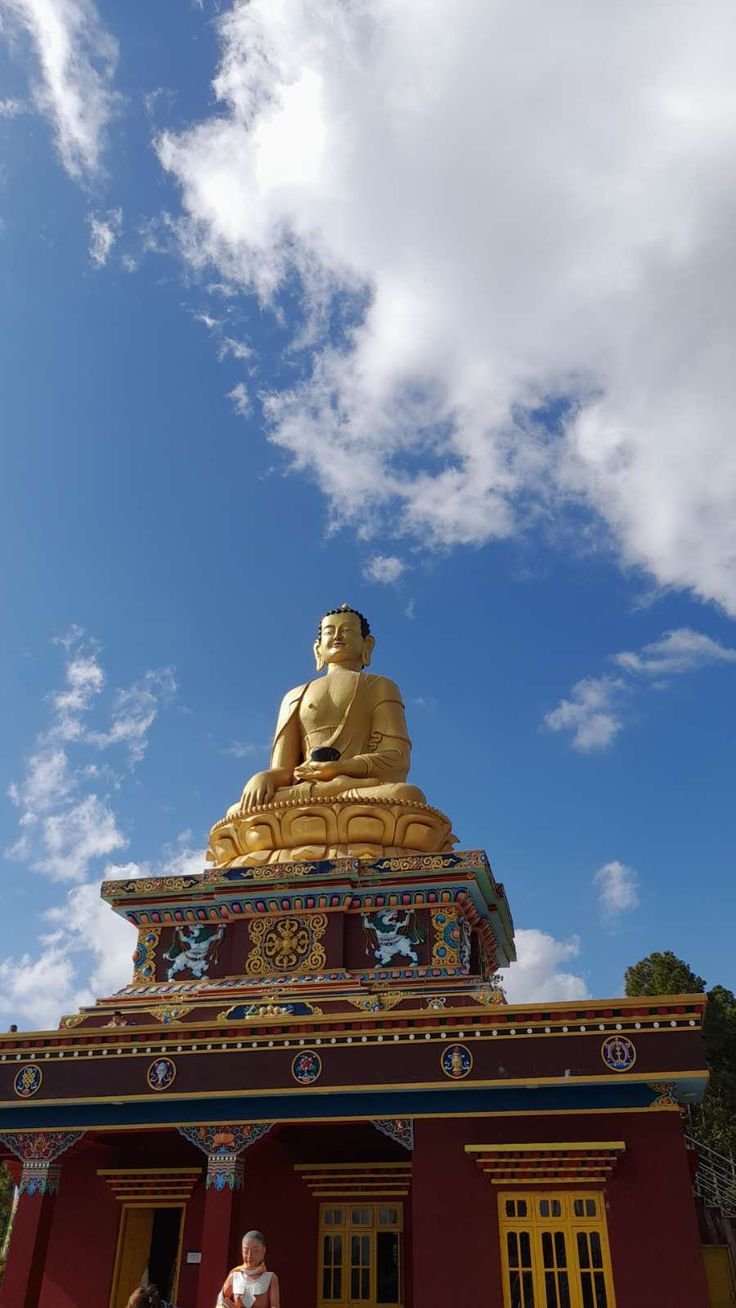
Must-See Attractions
Kathmandu Valley: The Cultural Heartbeat
Kathmandu, the capital city, is a vibrant tapestry of history, spirituality, and lively street life. The valley is home to several UNESCO World Heritage Sites that showcase Nepal’s architectural and religious heritage.
- Swayambhunath Stupa (Monkey Temple): Perched atop a hill, this ancient Buddhist stupa offers panoramic views of Kathmandu. Its iconic eyes painted on the stupa symbolize wisdom and compassion. Visitors can spin prayer wheels, explore surrounding monasteries, and enjoy the lively atmosphere created by resident monkeys and pilgrims.
- Pashupatinath Temple: One of the most sacred Hindu temples dedicated to Lord Shiva, located on the banks of the Bagmati River. It is a place of profound spiritual significance, where visitors can witness traditional cremation rituals and marvel at intricate temple architecture.
- Boudhanath Stupa: This massive stupa is one of the largest in the world and a focal point of Tibetan Buddhism in Nepal. Surrounded by shops and cafes, it is a serene place to observe monks in prayer, spin prayer wheels, and absorb the spiritual ambiance.
- Durbar Squares of Kathmandu, Patan, and Bhaktapur: These historic squares are filled with palaces, temples, and courtyards dating back centuries. Bhaktapur, in particular, is famed for its medieval charm, intricate wood carvings, and the living goddess tradition.
Pokhara: Gateway to the Annapurna Range
Pokhara is renowned for its stunning natural beauty and as a base for trekking in the Annapurna region.
- Phewa Lake: The tranquil lake is perfect for boating and offers spectacular reflections of the Annapurna mountains. The Tal Barahi Temple, located on an island in the lake, adds a spiritual touch to the scenic setting.
- World Peace Pagoda: Sitting atop a hill overlooking Pokhara and Phewa Lake, this white stupa symbolizes peace and offers breathtaking views, especially at sunrise and sunset.
- Sarangkot: A popular viewpoint for panoramic vistas of the Himalayas and Pokhara Valley, Sarangkot is also a hotspot for paragliding, offering thrilling flights over the spectacular landscape.
Everest Region and Annapurna Circuit
For trekking enthusiasts, these iconic routes remain the ultimate Himalayan adventure.
- Everest Base Camp: Trekking to the base of the world’s highest peak is a life-changing experience. Along the way, you encounter Sherpa villages, Buddhist monasteries, and awe-inspiring mountain scenery.
- Annapurna Circuit: This classic trek traverses diverse landscapes, from subtropical forests to high alpine terrain, passing through traditional villages and offering stunning views of Annapurna and Dhaulagiri ranges.
Chitwan National Park: Wildlife Safari
Chitwan offers a completely different experience—wildlife and jungle adventure. Here, you can explore dense forests on jeep or elephant safaris to spot rare animals such as one-horned rhinoceroses, Bengal tigers, elephants, and various bird species. Canoe rides on the Rapti River provide peaceful wildlife viewing opportunities, and visiting the elephant breeding center adds an educational element.
Lumbini: The Birthplace of Buddha
Lumbini is a sacred pilgrimage site for Buddhists worldwide. The peaceful gardens, ancient ruins, and numerous monasteries built by different countries create a spiritual atmosphere. The Maya Devi Temple marks the exact spot where Queen Maya Devi gave birth to Siddhartha Gautama, the Buddha.
Nagarkot: Himalayan Sunrise and Nature
Nagarkot is famous for its sunrise views over the Himalayas, including Mount Everest on clear days. It is an ideal spot for nature walks, bird watching, and enjoying the fresh mountain air close to Kathmandu.
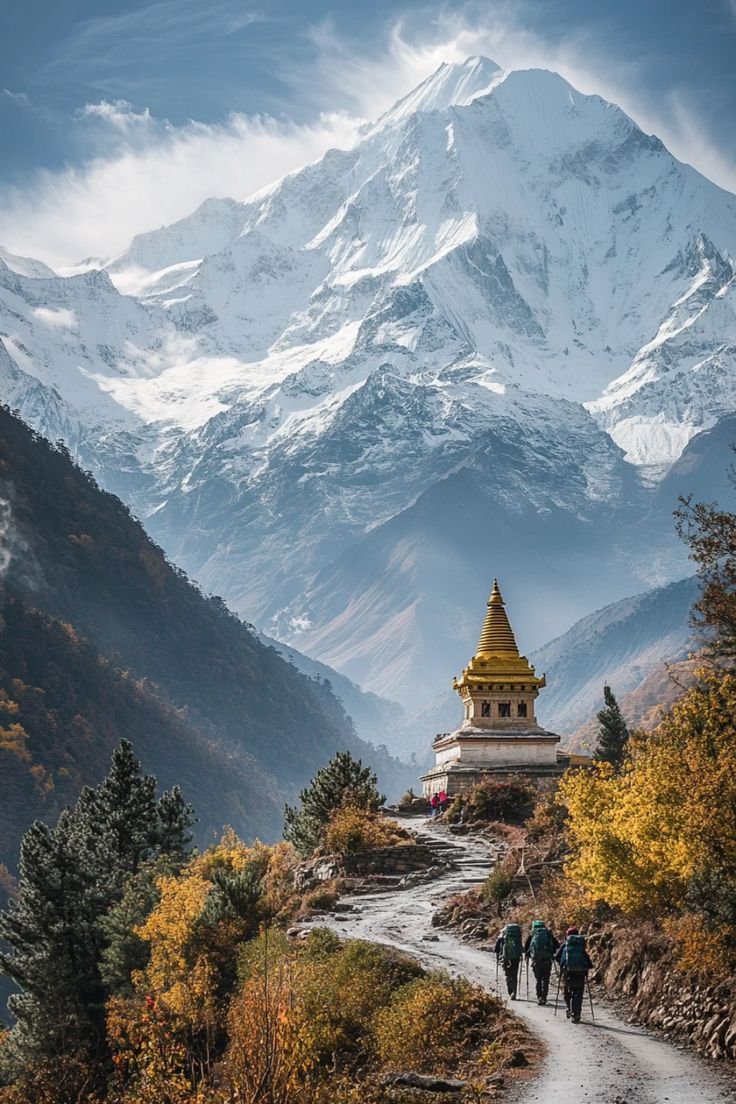
Must-Do Activities
Trekking and Hiking
Trekking is Nepal’s signature activity, with trails catering to all levels of fitness and experience.
- Everest Base Camp Trek: A challenging but rewarding trek that brings you close to the world’s highest peak, with opportunities to visit Sherpa culture hubs like Namche Bazaar and Tengboche Monastery.
- Annapurna Circuit Trek: A diverse route offering cultural immersion and varied landscapes, from lush green valleys to high mountain passes.
- Short Treks: For those with limited time, treks around the Kathmandu Valley, like the Shivapuri or Nagarkot hikes, provide beautiful views and cultural insights.
Cultural and Spiritual Exploration
- Temple Visits and Festivals: Participate in or observe vibrant festivals such as Dashain and Tihar, and explore ancient temples and stupas to understand Nepal’s religious diversity.
- Meditation and Yoga Retreats: Nepal offers many centers for spiritual practice, especially around Kathmandu and Pokhara, where visitors can engage in meditation, yoga, and mindfulness.
Adventure Sports
- Paragliding in Pokhara: Soar high above the stunning Pokhara Valley and Phewa Lake for an unforgettable aerial perspective of the Himalayas.
- White-Water Rafting: Nepal’s rivers provide thrilling rafting experiences ranging from gentle flows to challenging rapids, suitable for beginners and experts alike.
- Mountain Biking: Explore rugged trails through hills and villages, combining adventure with cultural encounters.
Wildlife and Nature Tours
- Jungle Safari in Chitwan or Bardia National Parks: Encounter wildlife on guided jeep or elephant safaris, bird watching tours, and nature walks.
- Bird Watching: Nepal’s diverse ecosystems are home to over 800 bird species, making it a paradise for bird enthusiasts.
Scenic Flights and Helicopter Tours
For those who want to witness the grandeur of the Himalayas without trekking, scenic flights and helicopter tours provide spectacular views of Everest, Annapurna, and other peaks.
Lakeside Relaxation and Boating
Pokhara’s serene lakes offer opportunities for paddle boating, kayaking, and lakeside relaxation, ideal for unwinding after trekking or sightseeing.
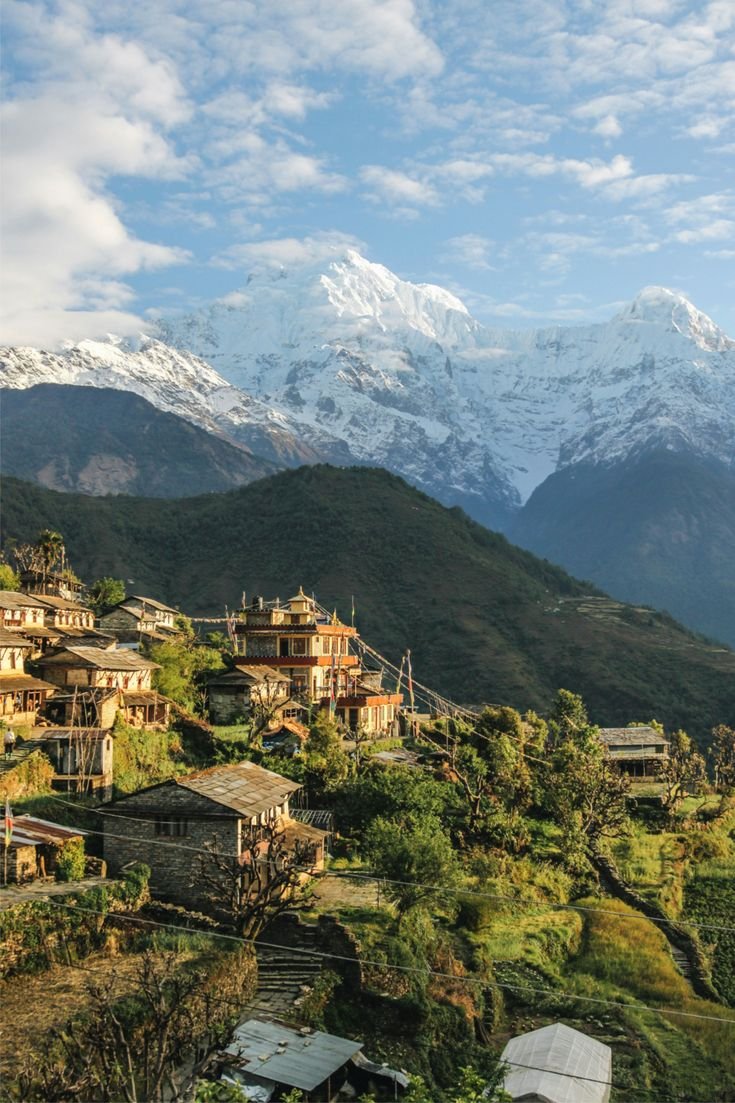
Travel Tips
Nepal, with its majestic mountains, rich culture, and warm hospitality, is a captivating destination for travelers in 2025. To make the most of your visit and ensure a safe, respectful, and enjoyable experience, it’s essential to be well-prepared. This guide offers detailed travel tips covering safety advice, local customs, and language basics to help you navigate Nepal with confidence and ease.
Safety Advice
General Safety
Nepal is generally a safe country for tourists, with a low rate of serious crime. However, like any popular travel destination, petty theft such as pickpocketing and bag-snatching can occur, especially in crowded areas like markets, tourist hubs, and public transport. To protect yourself:
- Always keep your belongings secure and be vigilant in busy places.
- Carry only a photocopy of your passport and keep the original documents safely locked away.
- Avoid walking alone in poorly lit or deserted areas after dark.
- Use reliable transportation options, such as pre-arranged taxis or ride-sharing services, especially at night.
- Stay alert and avoid excessive consumption of alcohol or unfamiliar local beverages to maintain clear judgment.
Trekking and Outdoor Safety
Trekking is one of Nepal’s biggest draws, but it requires careful preparation:
- Never trek alone. Always hire a reputable local guide or join a trekking group. Solo trekking is not recommended due to risks such as getting lost, altitude sickness, or sudden weather changes.
- Obtain all necessary permits, including the Trekking Information Management System (TIMS) card and national park permits for protected areas.
- Be aware of hazards such as avalanches, landslides, rockfalls, glacial crevasses, and extreme weather, especially above 3,000 meters altitude.
- Acclimatize properly to prevent altitude sickness by ascending gradually and listening to your body.
- Carry warm clothing and wet weather gear, sunblock with SPF 20 or higher, and sunglasses.
- Ensure your travel insurance covers mountain rescue and helicopter evacuation costs.
- Keep updated on weather forecasts and trekking conditions, and be prepared for delays in internal flights due to weather.
Health Precautions
- Drink only bottled or purified water. Avoid ice cubes and raw or undercooked food to prevent stomach illnesses.
- Stay hydrated, especially at altitude.
- Update routine vaccinations before travel, and consider vaccines for hepatitis A and B, typhoid, and rabies.
- Carry a basic first aid kit and any personal medications.
- Be cautious of altitude sickness symptoms such as headache, nausea, dizziness, and shortness of breath. Descend immediately if symptoms worsen.
Emergency Contacts
Keep these emergency numbers handy:
- Police: 100
- Tourist Police: 1144 (Kathmandu), with regional numbers available in Pokhara, Mustang, and other trekking areas
- Ambulance: 102
- Fire and Rescue: 101
- Traffic Police: 103
Tourist police are stationed in major tourist hubs and speak English, offering assistance and enhancing visitor safety.
Local Customs
Respecting Nepalese customs enriches your experience and fosters goodwill with locals.
Dress Code and Behavior
- Dress modestly, especially when visiting temples, monasteries, or rural villages. Cover your shoulders and knees as a sign of respect.
- Remove shoes before entering religious sites and some homes.
- Avoid public displays of affection, which are generally frowned upon.
- Use your right hand for giving and receiving items, as the left hand is considered unclean.
- When greeting, a traditional “Namaste” with hands pressed together and a slight bow is appreciated.
Religious Sensitivities
- Nepal is predominantly Hindu and Buddhist, and religion plays a central role in daily life.
- Do not touch religious objects or offerings without permission.
- Photography inside temples or during rituals may be restricted; always ask first.
- Avoid pointing your feet at people or religious objects, as feet are considered impure.
Social Etiquette
- Showing patience and politeness goes a long way.
- Bargaining is common in markets but do so respectfully.
- Tipping is appreciated in restaurants, hotels, and for guides and porters, but not mandatory.
- Avoid discussing sensitive political topics unless you know the person well.
Language Basics
Nepali is the official language of Nepal and is spoken widely throughout the country. English is commonly spoken in tourist areas, hotels, and by guides, but learning a few basic Nepali phrases can enhance your interactions and show respect for the local culture.
Common Nepali Phrases
- Namaste (नमस्ते) – Hello / Greetings
- Dhanyabad (धन्यवाद) – Thank you
- Ho (हो) – Yes
- Hoina (होइन) – No
- Kripaya (कृपया) – Please
- Sanchai cha? (सन्चै छ?) – How are you?
- Sanchai chu (सन्चै छु) – I am fine
- Kati ho? (कति हो?) – How much is it?
- Pani (पानी) – Water
- Bistarai (बिस्तारै) – Slowly (useful when asking someone to speak slowly)
Useful Tips
- Smile and use gestures if you don’t know the language; Nepali people are generally warm and helpful.
- Learning numbers from one to ten in Nepali can help with shopping and bargaining.
- Carry a small phrasebook or translation app for convenience.
Final Thoughts
Additional Practical Travel Tips
- Currency: Only Nepali Rupees are accepted. Exchange money at official centers or banks upon arrival.
- Electrical outlets: Nepal uses 220V with Type C, D, and M plugs. Carry a universal adapter.
- Packing: Pack light but include warm clothes, rain gear, and sturdy footwear, especially if trekking.
- Connectivity: Mobile coverage can be limited in remote areas; consider renting a satellite phone for long treks.
- Respect the environment: Avoid littering and use eco-friendly products to preserve Nepal’s natural beauty.
By following these safety tips, respecting local customs, and learning some language basics, your trip to Nepal in 2025 will be safer, more enjoyable, and culturally rewarding. Nepal’s breathtaking landscapes and warm-hearted people await you with unforgettable experiences that will stay with you for a lifetime.

